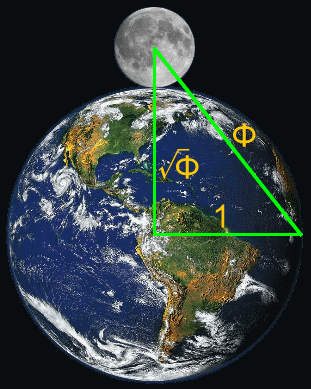@timur,
Can you deny my recreation of "The Golden Ratio"?
Based on these formulas:
1 6 3 1 3 (9's) (Got it from Fibonacci's Sequence)
3 1 3 1 3 (7's) (Got it from Pi)
2 1 2 1 2 (3's) (got it from Golden Ratio)
And this formula:
9, 1, 7, 1, 1, 7, 9, 4, 9, 7, 9, 7, 9
I now have 3, 7 9. Let's look at the "Magic Square".
( ) = Golden Ratio
{ } = Almost Golden Ratio
(1), 4 {7}
2, 5 8
{(3)}, 6 {(9)}.
The Golden Ratio looks like this:

Using the 3, 7 and 9, on the "Magic Square", you get Bottom-left, top-right and bottom-right. The Golden Ratio is close, but it's Bottom-left, top-left, bottom-right.
So if you want the Golden Ratio, you have to find the formulaic answer to transitioning the 7 into a 1. I have the formula right here: 3 + 1 + 9 = 14. Pi is 3.14.) Half of 14 is 7. Look at these formulas one more time:
3 1 3 1 3 (7's) (Got it from Pi)
2 1 2 1 2 (3's) (got it from Golden Ratio)
The Universe transposed from Pi to the Golden Ratio by reducing itself to 1/3 of its mathematical size when it was Pi.
In order of massive to small mathematical designs: Fibonacci Sequence (9) > Pi (7) > the Golden Ratio (3).